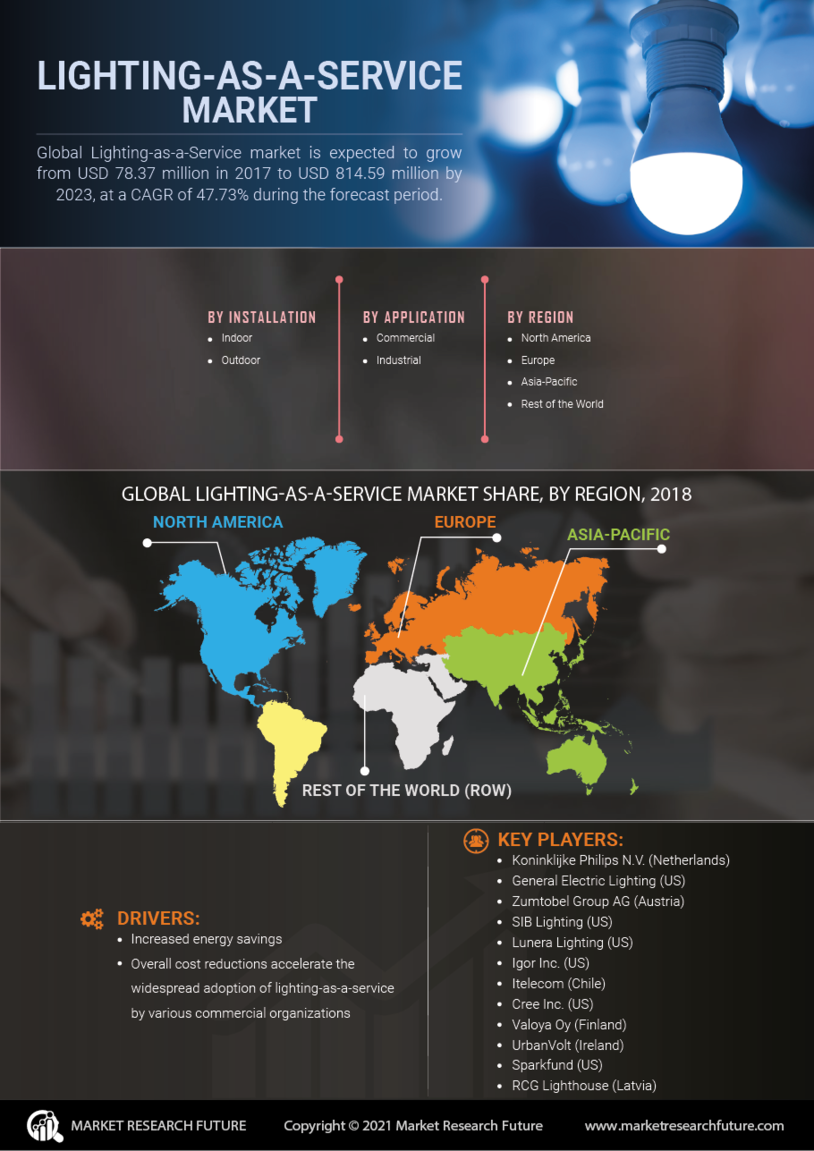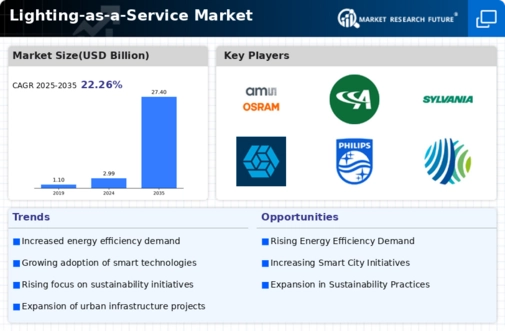Cost Efficiency
Cost efficiency is a significant driver for the Lighting-as-a-Service Market. Businesses are increasingly recognizing the financial benefits of adopting lighting-as-a-service models, which eliminate the need for large upfront capital expenditures. Instead, organizations can pay for lighting solutions on a subscription basis, which allows for better cash flow management. This model not only reduces initial costs but also includes maintenance and upgrades, ensuring that businesses always have access to the latest technology without additional financial burden. Market analysis suggests that companies can save up to 30% on lighting costs by utilizing these service models. As organizations seek to optimize their operational expenses, the appeal of cost-effective lighting solutions is likely to drive further adoption within the Lighting-as-a-Service Market.
Regulatory Compliance
Regulatory compliance is increasingly influencing the Lighting-as-a-Service Market. Governments worldwide are implementing stringent regulations aimed at reducing energy consumption and promoting energy-efficient technologies. These regulations often mandate the use of energy-efficient lighting solutions in commercial and industrial settings. As a result, businesses are compelled to adopt lighting-as-a-service models that align with these regulatory requirements. Compliance not only helps organizations avoid penalties but also enhances their reputation as environmentally responsible entities. Market data indicates that regions with strict energy efficiency regulations are witnessing a surge in the adoption of lighting-as-a-service solutions. This trend suggests that as regulatory frameworks continue to evolve, the Lighting-as-a-Service Market will likely expand in response to the need for compliant and efficient lighting solutions.
Enhanced User Experience
Enhanced user experience is a vital driver for the Lighting-as-a-Service Market. As businesses strive to create more engaging and comfortable environments, the demand for customizable lighting solutions is on the rise. Lighting-as-a-service models offer flexibility, allowing organizations to tailor lighting settings to meet specific needs and preferences. This adaptability can significantly improve employee productivity and customer satisfaction. Market Research Future indicates that well-designed lighting can enhance mood and focus, leading to better performance in workspaces. Furthermore, the ability to easily adjust lighting conditions contributes to a more pleasant atmosphere in retail and hospitality environments. As the focus on user experience intensifies, the Lighting-as-a-Service Market is likely to benefit from the growing demand for innovative and customizable lighting solutions.
Sustainability Initiatives
The increasing emphasis on sustainability is a pivotal driver for the Lighting-as-a-Service Market. Organizations are increasingly adopting energy-efficient lighting solutions to reduce their carbon footprint. This shift is not merely a trend; it reflects a broader commitment to environmental stewardship. According to recent data, energy-efficient lighting can reduce energy consumption by up to 75%, which is a compelling incentive for businesses aiming to meet sustainability goals. Furthermore, regulatory frameworks are evolving, with many regions implementing stricter energy efficiency standards. This regulatory pressure encourages companies to transition to sustainable lighting solutions, thereby propelling the growth of the Lighting-as-a-Service Market. As businesses seek to align with sustainability initiatives, the demand for innovative lighting solutions that offer both efficiency and environmental benefits is likely to rise.
Technological Advancements
Technological advancements play a crucial role in shaping the Lighting-as-a-Service Market. The integration of smart technologies, such as IoT and AI, enhances the functionality and efficiency of lighting systems. These technologies enable real-time monitoring and control, allowing businesses to optimize energy usage and reduce costs. For instance, smart lighting systems can adjust brightness based on occupancy, leading to significant energy savings. Market data indicates that the adoption of smart lighting solutions is expected to grow at a compound annual growth rate of over 20% in the coming years. This trend suggests that as technology continues to evolve, the Lighting-as-a-Service Market will likely experience substantial growth driven by the demand for intelligent lighting solutions that offer enhanced performance and user experience.


















Leave a Comment